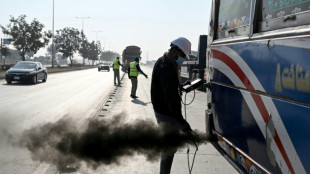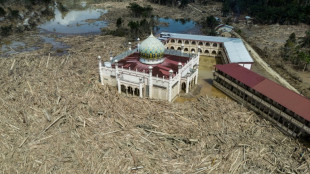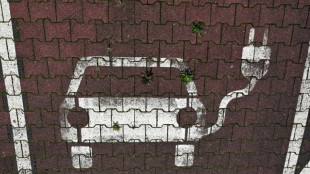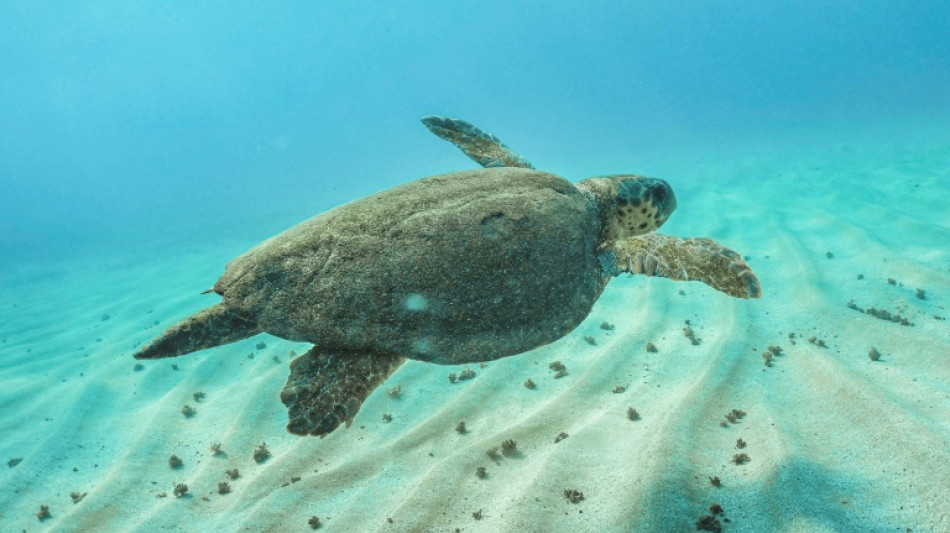
-
 Rob Reiner: Hollywood giant and political activist
Rob Reiner: Hollywood giant and political activist
-
Observers say Honduran election fair, but urge faster count
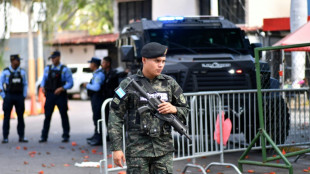
-
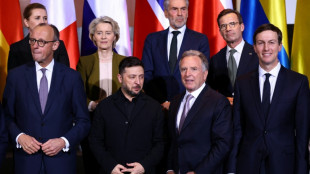 Europe proposes Ukraine peace force as Zelensky hails 'real progress' with US
Europe proposes Ukraine peace force as Zelensky hails 'real progress' with US
-
Trump condemned for saying critical filmmaker brought on own murder

-
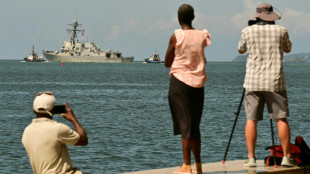 US military to use Trinidad airports, on Venezuela's doorstep
US military to use Trinidad airports, on Venezuela's doorstep
-
Daughter warns China not to make Jimmy Lai a 'martyr'

-
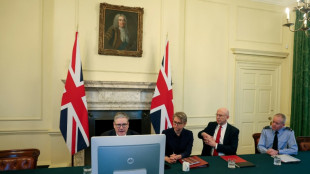 UK defence chief says 'whole nation' must meet global threats
UK defence chief says 'whole nation' must meet global threats
-
Rob Reiner's death: what we know
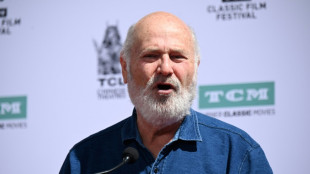
-
 Zelensky hails 'real progress' in Berlin talks with Trump envoys
Zelensky hails 'real progress' in Berlin talks with Trump envoys
-
Toulouse handed two-point deduction for salary cap breach

-
 Son arrested for murder of movie director Rob Reiner and wife
Son arrested for murder of movie director Rob Reiner and wife
-
Stock market optimism returns after tech selloff but Wall Street wobbles

-
 Clarke warns Scotland fans over sky-high World Cup prices
Clarke warns Scotland fans over sky-high World Cup prices
-
In Israel, Sydney attack casts shadow over Hanukkah

-
 Son arrested after Rob Reiner and wife found dead: US media
Son arrested after Rob Reiner and wife found dead: US media
-
Athletes to stay in pop-up cabins in the woods at Winter Olympics
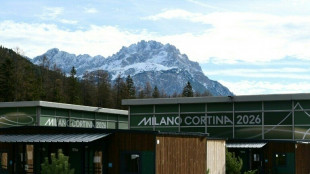
-
 England seek their own Bradman in bid for historic Ashes comeback
England seek their own Bradman in bid for historic Ashes comeback
-
Decades after Bosman, football's transfer war rages on

-
 Ukraine hails 'real progress' in Zelensky's talks with US envoys
Ukraine hails 'real progress' in Zelensky's talks with US envoys
-
Nobel winner Machado suffered vertebra fracture leaving Venezuela

-
 Stock market optimism returns after tech sell-off
Stock market optimism returns after tech sell-off
-
Iran Nobel winner unwell after 'violent' arrest: supporters

-
 Police suspect murder in deaths of Hollywood giant Rob Reiner and wife
Police suspect murder in deaths of Hollywood giant Rob Reiner and wife
-
'Angry' Louvre workers' strike shuts out thousands of tourists

-
 EU faces key summit on using Russian assets for Ukraine
EU faces key summit on using Russian assets for Ukraine
-
Maresca committed to Chelsea despite outburst

-
 Trapped, starving and afraid in besieged Sudan city
Trapped, starving and afraid in besieged Sudan city
-
Showdown looms as EU-Mercosur deal nears finish line

-
 Messi mania peaks in India's pollution-hit capital
Messi mania peaks in India's pollution-hit capital
-
Wales captains Morgan and Lake sign for Gloucester

-
 Serbian minister indicted over Kushner-linked hotel plan
Serbian minister indicted over Kushner-linked hotel plan
-
Eurovision 2026 will feature 35 countries: organisers

-
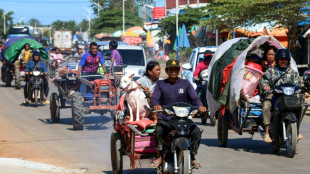 Cambodia says Thailand bombs province home to Angkor temples
Cambodia says Thailand bombs province home to Angkor temples
-
US-Ukrainian talks resume in Berlin with territorial stakes unresolved

-
 Small firms join charge to boost Europe's weapon supplies
Small firms join charge to boost Europe's weapon supplies
-
Driver behind Liverpool football parade 'horror' warned of long jail term

-
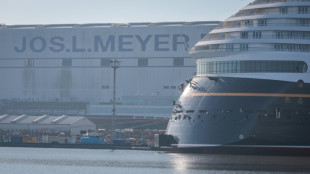 German shipyard, rescued by the state, gets mega deal
German shipyard, rescued by the state, gets mega deal
-
Flash flood kills dozens in Morocco town
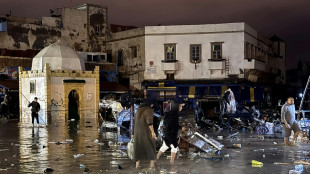
-
 'We are angry': Louvre Museum closed as workers strike
'We are angry': Louvre Museum closed as workers strike
-
Australia to toughen gun laws as it mourns deadly Bondi attack

-
 Stocks diverge ahead of central bank calls, US data
Stocks diverge ahead of central bank calls, US data
-
Wales captain Morgan to join Gloucester

-
 UK pop star Cliff Richard reveals prostate cancer treatment
UK pop star Cliff Richard reveals prostate cancer treatment
-
Mariah Carey to headline Winter Olympics opening ceremony

-
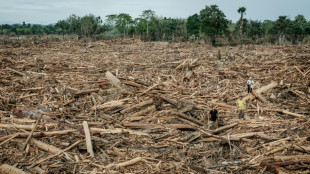 Indonesia to revoke 22 forestry permits after deadly floods
Indonesia to revoke 22 forestry permits after deadly floods
-
Louvre Museum closed as workers strike

-
 Spain fines Airbnb 64 mn euros for posting banned properties
Spain fines Airbnb 64 mn euros for posting banned properties
-
Japan's only two pandas to be sent back to China

-
 Zelensky, US envoys to push on with Ukraine talks in Berlin
Zelensky, US envoys to push on with Ukraine talks in Berlin
-
Australia to toughen gun laws after deadly Bondi shootings


Much still pending on how high seas sanctions will work
A new global treaty on the high seas will enable the creation of sanctuaries deemed vital for the oceans, but many questions remain unanswered. Among them: How can we protect marine areas far from the coast? Where will they be created, and when?
- Unique, fragile areas -
The text to be adopted at the United Nations on Monday provides for the creation of marine protected areas in international waters, in areas that are unique, particularly fragile or important for endangered species.
Biodiversity is a priority, "but it's not the only important criteria," Minna Epps of the International Union for Conservation of Nature (IUCN) tells AFP, referring also to "ecological functions" in areas conducive to plankton blooms.
One example is the "thermal dome" off the coast of Costa Rica. Each year, the upwelling of nutrient-rich deep-sea water causes an algae bloom, the first link in a food chain that provides a highly hospitable habitat for blue whales.
"You don't want to just protect one ecosystem," adds Liz Karan of the Pew Charitable Trusts, underlining the importance of a "network" that would allow corridors for migratory species.
The network ideally would link high seas marine protected areas with existing protected areas in national waters near coasts.
Based on such criteria, scientists and NGOs have already identified a dozen potential marine areas.
In addition to the "thermal dome," they include the Emperor seamounts that extend across the Hawaiian archipelago in the Pacific, the so-called "lost city" in the middle of the Atlantic with its many hydrothermal vents, and the Sargasso Sea.
Also noteworthy are the Nazca and Salas y Gomez ridges, off the coast of Chile, which could become one of the first sanctuaries established after the treaty.
- When will they be created? -
Not for several years.
"Four years would be very optimistic. Sadly, I think maybe five or six is more realistic," predicts Glen Wright, a researcher at the Institute for Sustainable Development and International Relations (IDDRI), while Epps reckons we won't see any before 2027.
Once adopted, the treaty must be signed and ratified by 60 countries to come into force and enable the Conference of the Parties (COP) to meet.
The COP will be empowered to create a sanctuary on the proposal of one or more states, whereas today it is mainly NGOs that put forward such proposals.
Only Chile has mentioned a formal project at Nazca and Salas y Gomez.
- Objective 30x30 -
Although it will take several years for sanctuaries to be established, the treaty is considered crucial to achieving the goal set by all governments of protecting 30 percent of the planet's land and oceans by 2030.
Without the treaty, "we're not going to achieve 30x30. It's as simple as that," says Jessica Battle of conservation group WWF.
Given the tight timetable, Wright cautions, the contribution of the treaty to 30x30 "may be limited."
- What kind of protection? -
On land and at sea, the degree of protection afforded to reserves of all kinds varies.
On the high seas, "I find it hard to imagine that there will be any large, strictly protected areas," says Wright, who thinks it more viable to create small areas with maximum restrictions (such as a total ban on activities) and others with limited measures -- perhaps seasonally enforced to protect breeding or migrating species.
- Monitoring and enforcement? -
With the oceans' vastness a major issue for enforcement, experts often talk about how technology, in particular satellites, will be used to monitor protected areas.
"The beauty of the high seas is it takes a lot of energy to get out there," says Battle.
"You have to have a boat and the boats will have... a transmitter and so you can track these vessels."
A mechanism to spot unauthorized activity could be set up, similar to one used to monitor global fishing.
The question then becomes how to finance this surveillance and how to force offenders to respect the rules.
Under the treaty, states are responsible for the activities of vessels flying their flag on the high seas. However, the state in question must be a signatory to the treaty.
The text also provides for a "compliance" mechanism, which remains largely undefined.
"If there is proof that a state is flagging a vessel that is behaving contravening the regulations in (a Marine Protected Area), that can be brought to the COP," Battle explains.
"States don't like that. They don't want to be criticized at the international level."
L.Davis--AMWN
